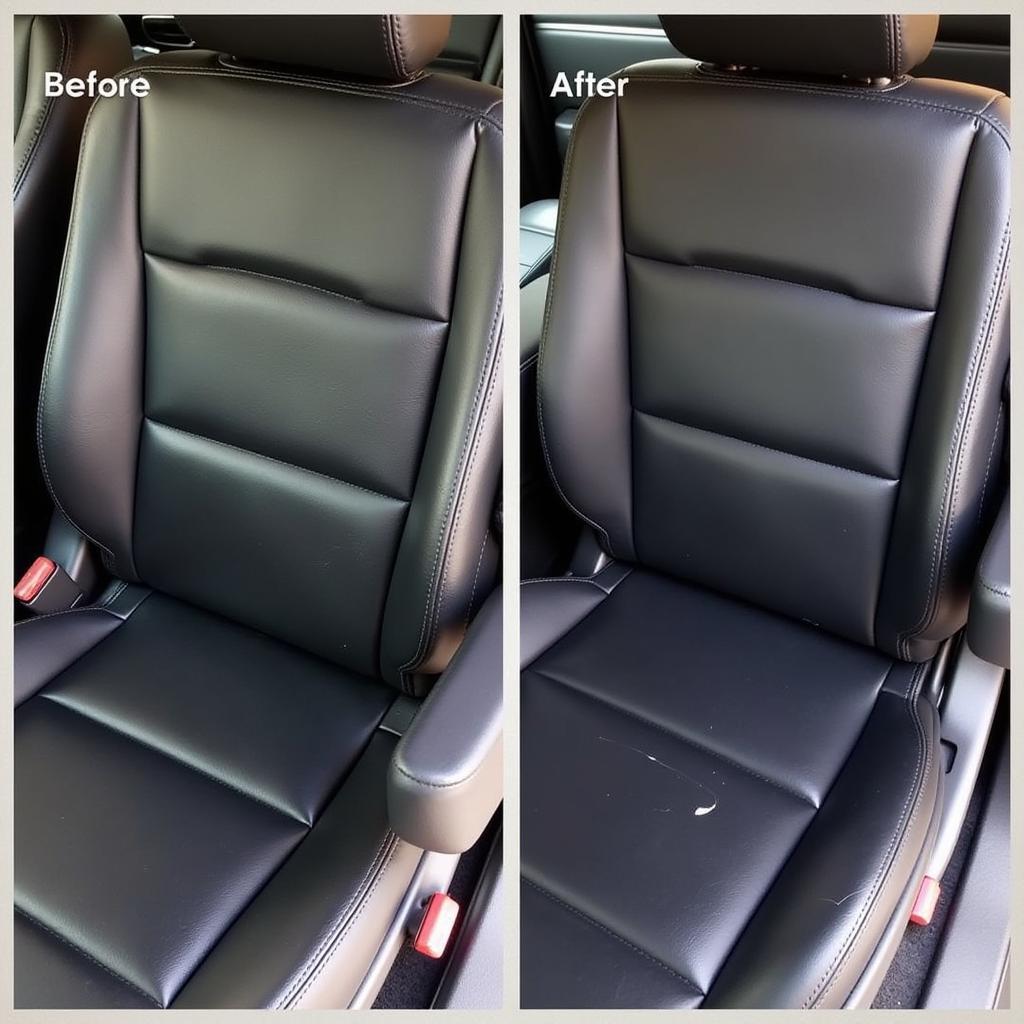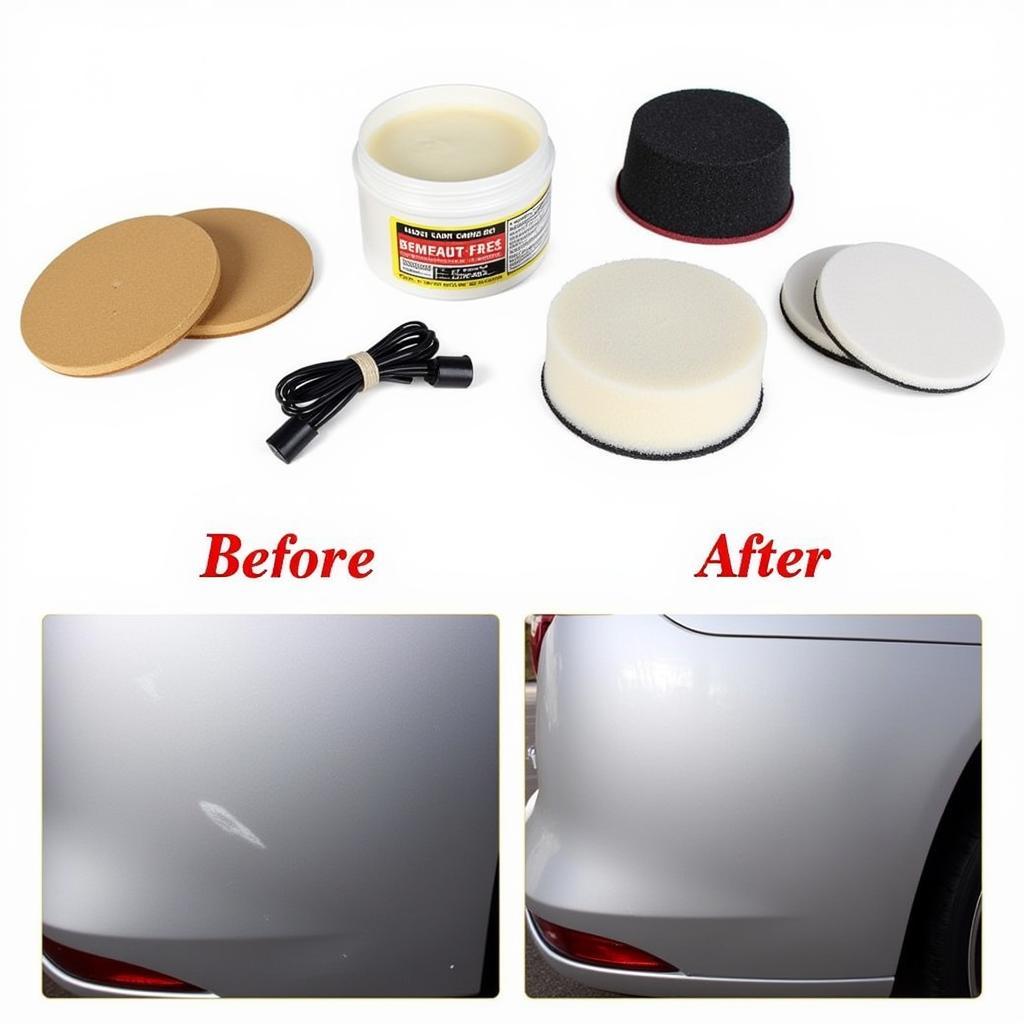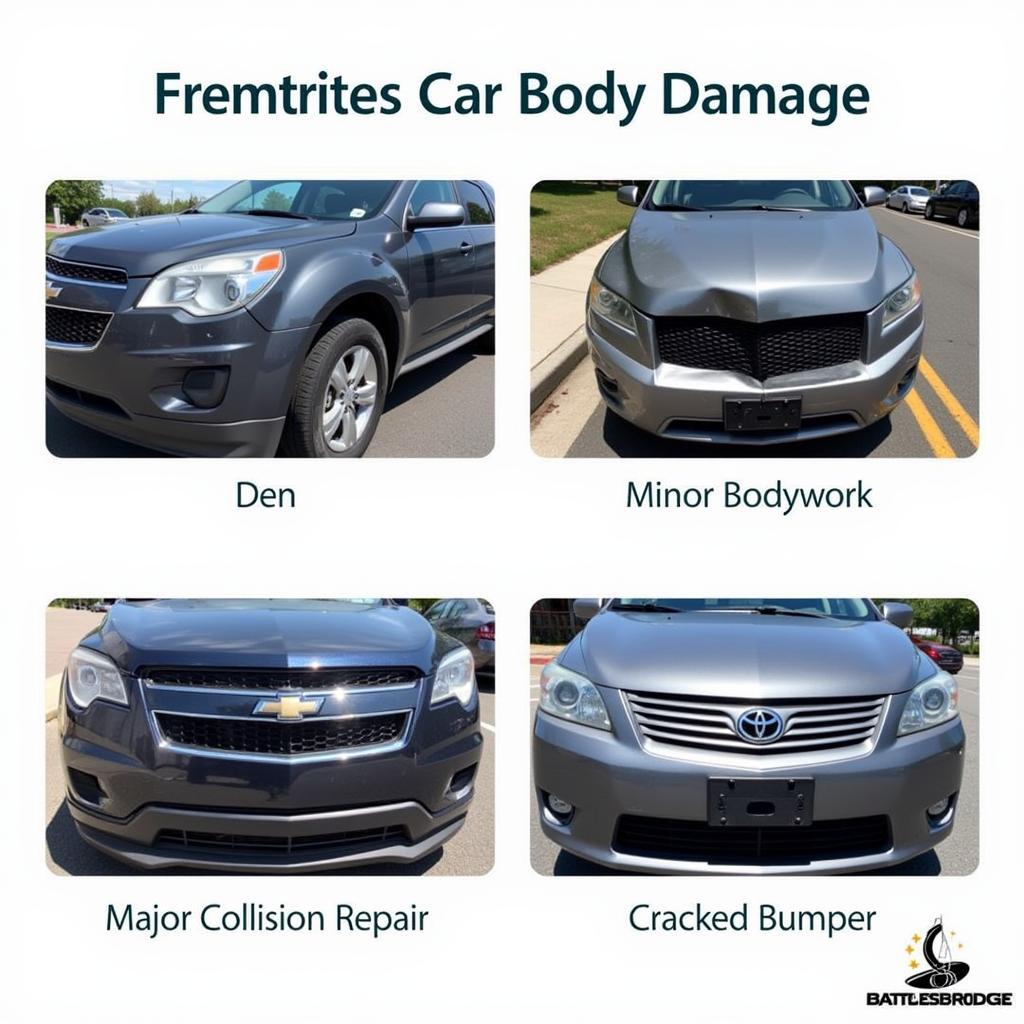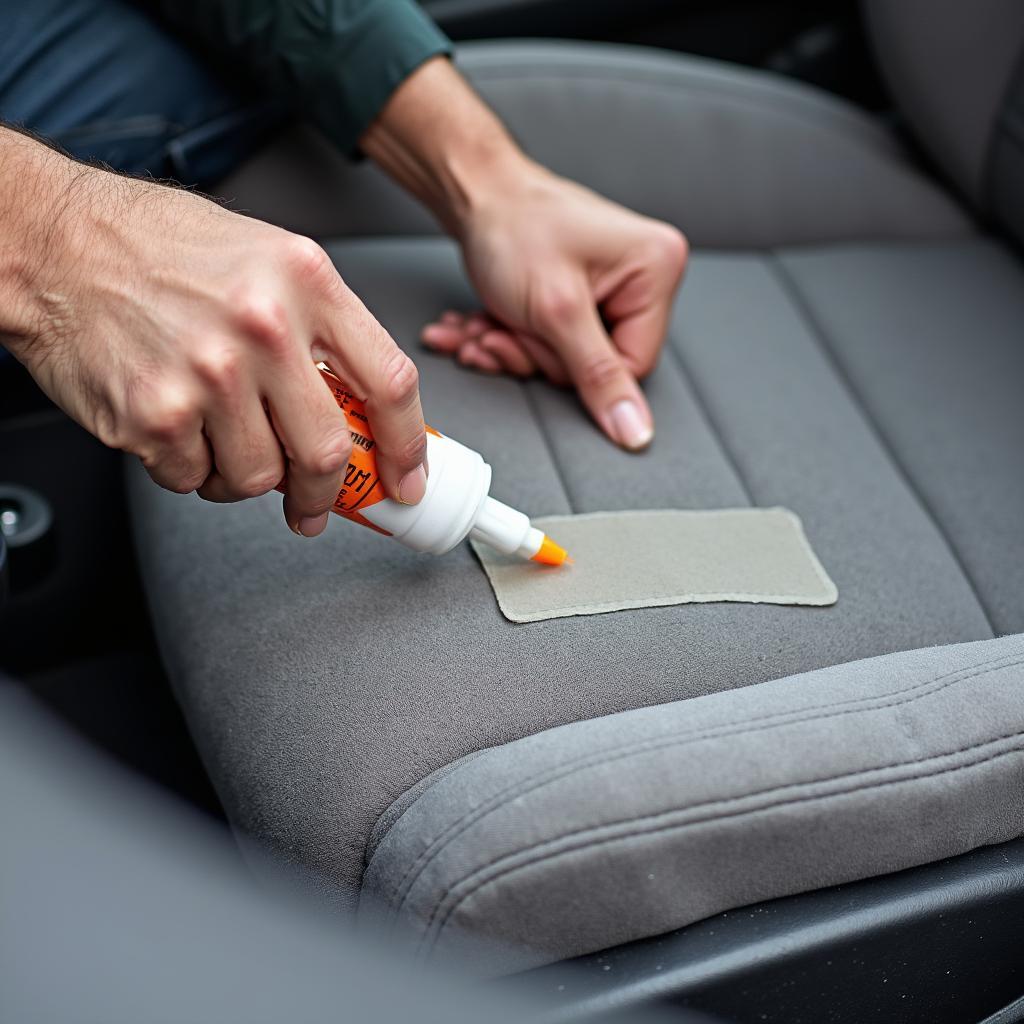
Repairing Torn Car Seat Foam
A comfortable car seat can make all the difference on a long drive, but over time, the foam padding can become worn, torn, or compressed. This leads to an uncomfortable ride and can even affect the structural integrity of the seat itself. Thankfully, you don’t always have to resort to an expensive replacement. Learning How To Repair Foam Car Seat issues can save you money and extend the life of your car’s interior.
 Repairing Torn Car Seat Foam
Repairing Torn Car Seat Foam
Assessing the Damage: Knowing When to Repair or Replace
Before you dive into the repair process, it’s important to assess the extent of the damage to your car seat foam. Minor wear and tear, such as small tears or slight compression, can often be addressed with DIY repairs. However, if the foam is severely damaged, infested with mold or mildew, or has a foul odor that won’t dissipate, replacement is likely the most practical solution.
DIY Car Seat Foam Repair: Step-by-Step Guide
For those ready to tackle the repair themselves, follow these detailed steps:
1. Gather Your Supplies:
- Sharp Fabric Scissors
- Utility Knife or Electric Carving Knife (for larger repairs)
- Upholstery Foam (available online or at fabric stores)
- Spray Adhesive specifically designed for foam and fabric
- Upholstery Thread and Needle (for sewing patches)
2. Prepare the Damaged Area:
Begin by removing the car seat from the vehicle. This usually involves unscrewing bolts and detaching any electrical connectors. Refer to your car’s owner manual for specific instructions. Once removed, thoroughly vacuum the seat to remove dirt and debris.
3. Repairing Minor Tears and Holes:
- Small Tears: For small tears, apply a thin layer of spray adhesive to both edges of the tear. Carefully align the edges and press firmly together, holding for a few minutes to allow the adhesive to bond.
- Small Holes and Larger Tears: Cut a patch of upholstery foam slightly larger than the damaged area. Apply spray adhesive to the back of the patch and around the edges of the hole in the seat foam. Carefully position the patch over the hole, ensuring a smooth and even surface.
4. Addressing Compression and Loss of Support:
- Adding a Foam Layer: If the seat feels overly compressed, add a new layer of upholstery foam on top of the existing foam. Cut the new foam to match the shape and size of the seat. Use spray adhesive to secure the new foam layer in place.
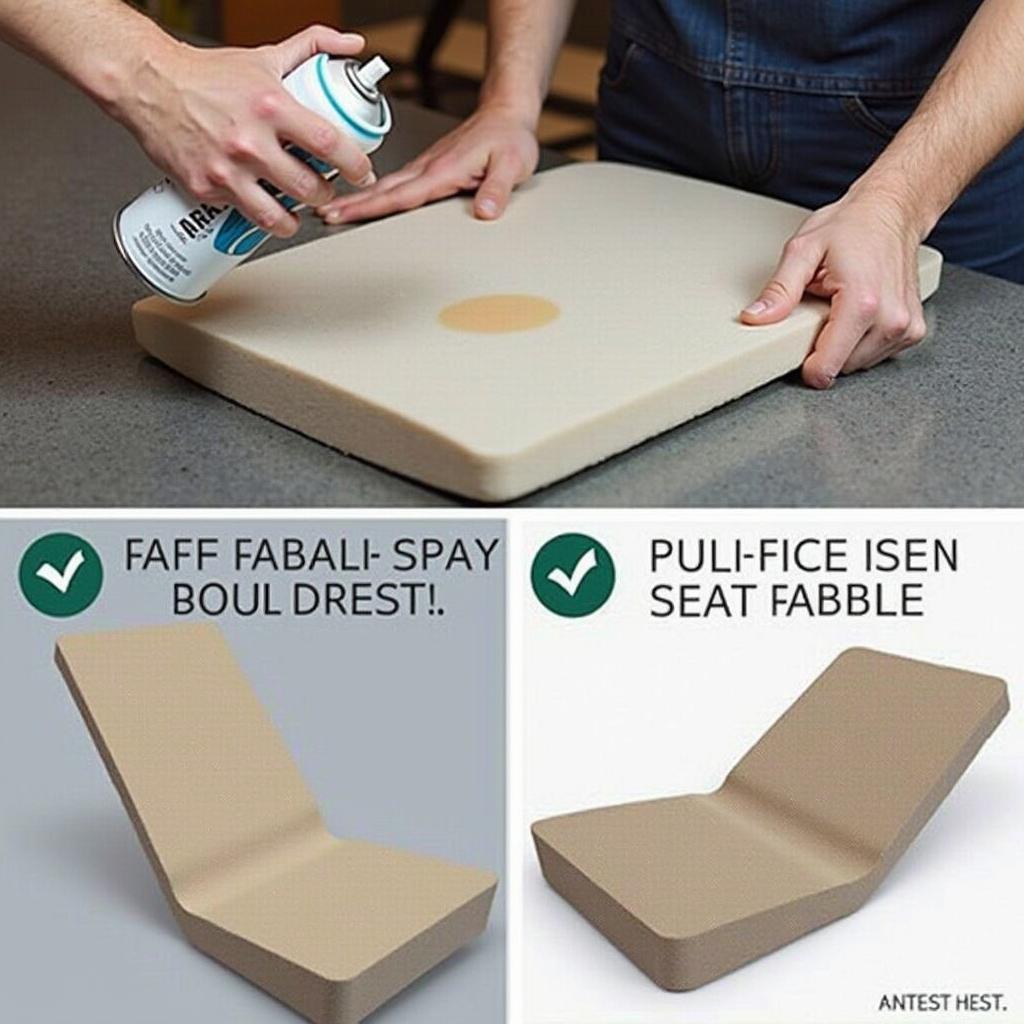 Applying Spray Adhesive to Car Seat Foam
Applying Spray Adhesive to Car Seat Foam
5. Testing the Repair:
Once the adhesive has dried completely, re-install the car seat in your vehicle. Sit in the seat and make sure the repair feels comfortable and supportive. If you notice any lumps or uneven areas, you may need to make further adjustments.
How to Repair Car Seat Foam Rubber: Special Considerations
Car seat foam rubber, commonly used in older vehicles, can deteriorate over time, becoming brittle and prone to crumbling. While repairing severely deteriorated foam rubber can be challenging, minor repairs are possible. Follow the steps above, but be aware that foam rubber requires a specialized adhesive designed for its unique properties.
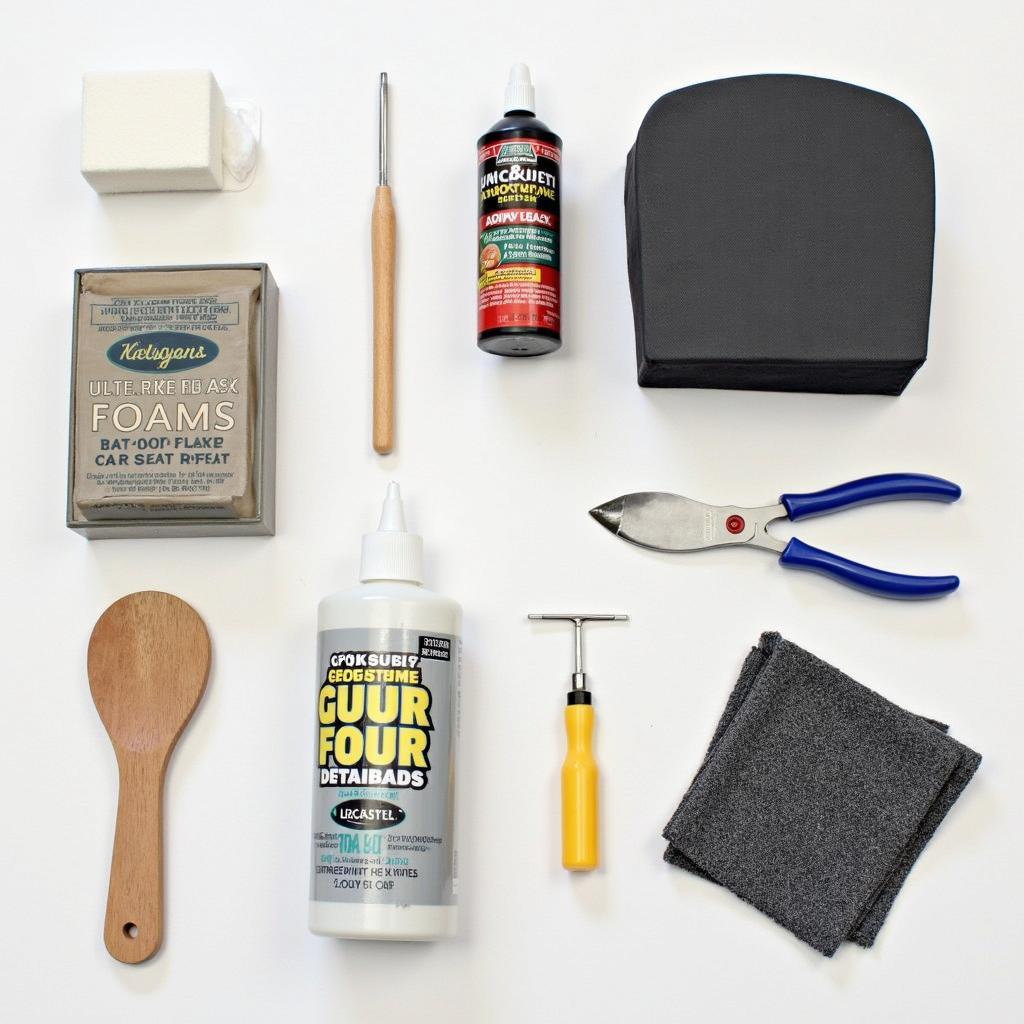 Car Seat Foam Repair Kit
Car Seat Foam Repair Kit
How to Shape Foam to Repair Car Seat Bolster
The bolsters are the side supports in your car seat that provide lateral support during turns. If the bolsters have lost their shape, you can use a technique called “foam carving” to restore them.
- Assess and Mark: Carefully examine the bolsters and mark the areas that need reshaping.
- Select Your Tool: For precise shaping, an electric carving knife is ideal. A utility knife can also be used, but it requires more care and control.
- Carve the Foam: Using a gentle back-and-forth motion, carefully carve away small amounts of foam at a time. It’s crucial to remove foam gradually to avoid over-shaping.
- Test and Refine: Periodically check your progress by sitting in the seat and feeling the bolsters. Continue carving until the desired shape and support are achieved.
Seeking Professional Help
While minor car seat foam repairs can be a DIY project, more complex repairs or replacements are best left to professionals. Experienced upholstery shops have the expertise, tools, and materials to handle intricate repairs and can ensure a high-quality finish.
Expert Insight:
“While DIY car seat foam repair can be cost-effective for minor damage,” advises John Miller, a veteran automotive upholsterer with over 20 years of experience, “attempting complex repairs without the proper skills and tools can often lead to further damage and ultimately higher repair costs. Knowing when to seek professional help is key to preserving the value and longevity of your car’s interior.”
How to Repair Foam in a Car Seat: FAQs
Can I use regular spray adhesive on car seat foam?
No, it’s essential to use spray adhesive specifically designed for foam and fabric. Regular spray adhesives may not bond properly and could even damage the foam.
How long does it take for car seat foam adhesive to dry?
Drying time varies depending on the adhesive used and environmental conditions. However, it’s generally recommended to wait at least 24 hours for the adhesive to cure completely before using the car seat.
Can I wash my car seat cover after repairing the foam?
It’s best to consult the care instructions on your specific car seat cover. Some covers are machine washable, while others require hand washing or professional cleaning.
Can I add a heating element when repairing my car seat foam?
Yes, adding an aftermarket seat heater is possible during the repair process. However, it’s essential to choose a heating element specifically designed for automotive use and to follow the manufacturer’s installation instructions carefully.
What type of upholstery foam is best for car seat repair?
High-density upholstery foam is ideal for car seat repair as it provides good support and durability.
Need More Help with Car Repairs?
For more helpful guides and information on car repairs, be sure to check out these resources:
If you need personalized assistance with your car repair needs, our team of expert mechanics is always ready to help. Contact us via WhatsApp at +1(641)206-8880 or email us at [email protected]. We provide 24/7 support to answer all your car repair questions and guide you through any challenges you might face.

